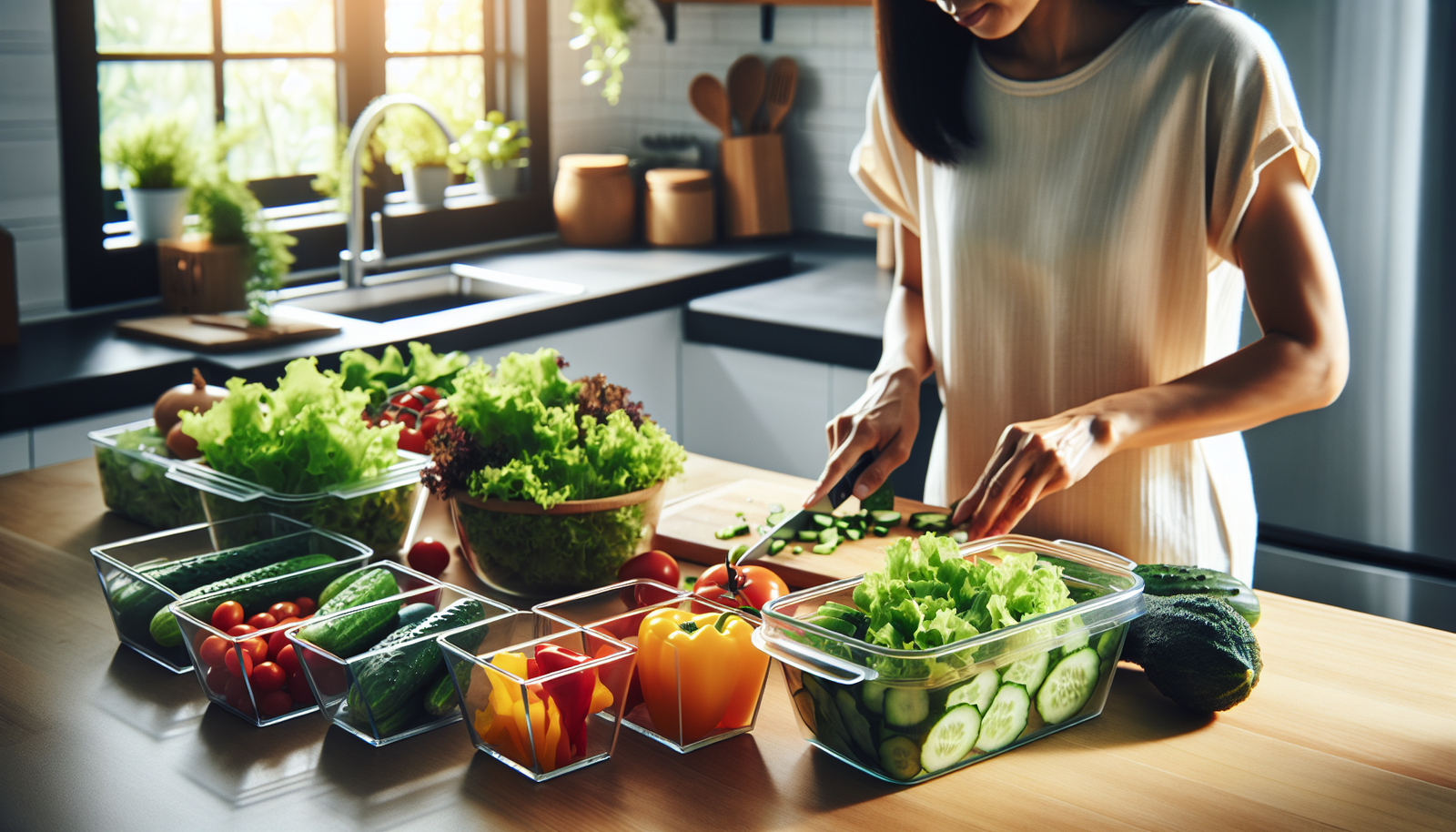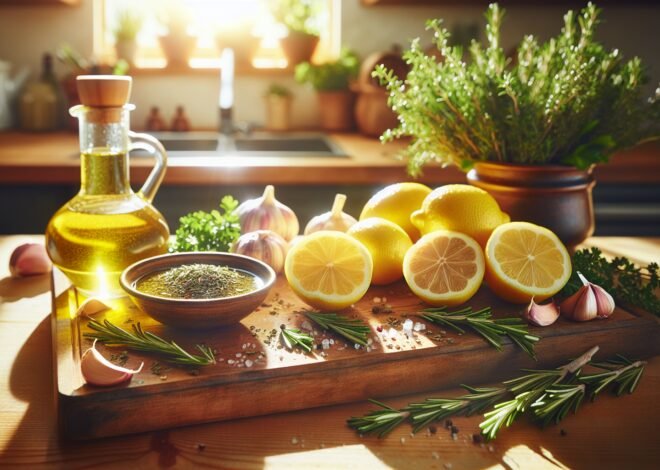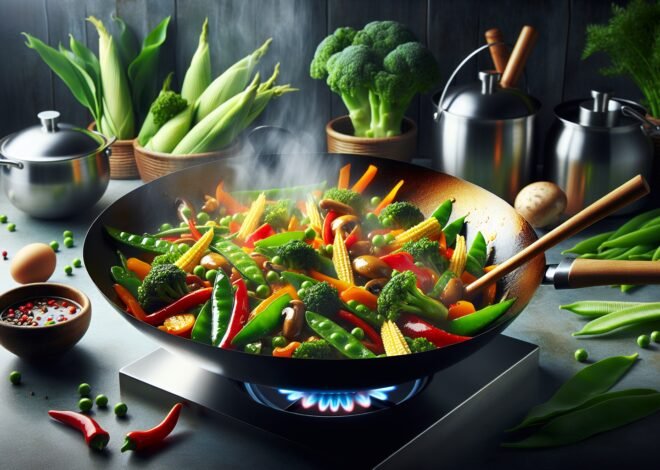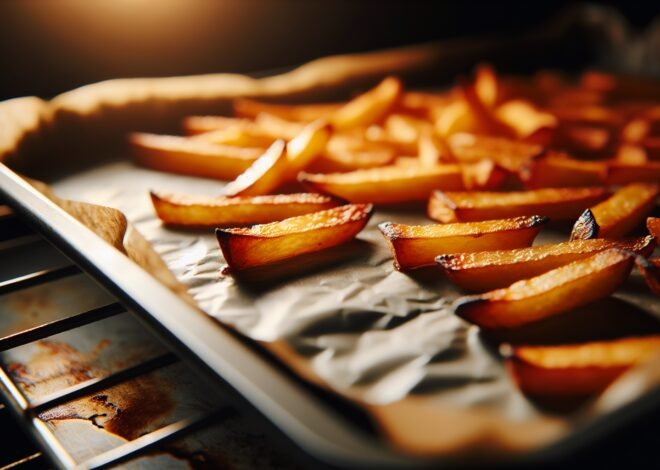
Best Tips for Prepping Salad Vegetables in Advance
Prepping salad vegetables efficiently can save time and enhance meal freshness. Did you know that prepping vegetables in advance can extend their shelf life by up to a week? This post delves into the best tips for preparing salad veggies, ensuring your salads remain vibrant and nutritious. You’ll discover techniques for selecting the freshest produce, methods for proper washing and storage, and strategies to maintain crispness. Read on to elevate your salad preparation and enjoy consistently fresh meals.
“`html
How to Pre-Wash Salad Vegetables for Freshness
Pre-washing salad vegetables is a crucial step in maintaining their freshness and flavor. Not only does it remove dirt and bacteria, but it also enhances the overall taste of your salad. Discover the importance of pre-washing, the best techniques to use, and how to ensure your vegetables are properly dried before storage.
Why Pre-Washing Salad Greens is Essential
Salad greens, due to their delicate nature, are prone to harboring dirt and bacteria. Pre-washing helps eliminate these impurities, ensuring a safe and clean eating experience. It also removes any pesticides or chemicals that might be lingering on the leaves. By washing your greens, you also boost their crispness, making for a more delightful salad. Moreover, pre-washing prolongs the shelf life of your greens, keeping them fresh for longer. This step is not just about cleanliness; it’s about enhancing the quality and safety of your meals.
The Best Techniques to Wash Different Vegetables
Each type of vegetable has its unique washing needs. Leafy greens like lettuce and spinach require gentle handling. Fill a large bowl with cold water and submerge the leaves. Swirl them gently to dislodge dirt, then lift out the greens to avoid resettling the dirt. For sturdier vegetables like carrots and potatoes, a scrub brush works wonders. Hold them under running water and brush away soil thoroughly. Delicate vegetables such as tomatoes and bell peppers benefit from a simple rinse under cool water, using your hands to rub away any surface impurities. Always opt for cold water, as warm water can start breaking down the vegetables.
How to Properly Dry Vegetables Before Storage
Drying is an essential step that should not be overlooked. Excess moisture can lead to faster spoilage. Pat leafy greens dry with a clean kitchen towel or use a salad spinner to remove water efficiently. Spread them on a paper towel and let them air dry for extra assurance. For larger vegetables, simply pat dry with a towel. Ensure all surfaces are moisture-free before storing. This not only boosts their shelf life but also keeps them crisp and ready to use whenever you need them.
Efficient Ways to Store Prepped Salad Vegetables
Storing prepped salad vegetables correctly is key to maintaining their freshness and taste. With the right methods, you can extend shelf life and enjoy crisp, flavorful salads anytime. Learn about the best storage containers, the effectiveness of vacuum sealing, and the difference between storing chopped and whole vegetables.
The Best Containers and Packaging for Longer Freshness
Choosing the right storage containers can make a significant difference. Opt for airtight containers to prevent air exposure, which can cause spoilage. Glass containers are an excellent choice as they don’t absorb odors and keep the vegetables fresh. For leafy greens, consider using a container lined with paper towels to absorb excess moisture. Reusable silicone bags are another eco-friendly option that seals in freshness while saving space. Ensure that whatever container you choose is clean and completely dry before storing your vegetables.
How to Use Vacuum Sealing for Salad Ingredients
Vacuum sealing is a game-changer for preserving salad ingredients. This method removes air, reducing oxidation and slowing spoilage. Start by placing your vegetables in vacuum-seal bags, ensuring they’re dry to avoid mold growth. Use a vacuum sealer to remove excess air and seal the bag tightly. This method is particularly effective for crispy vegetables like carrots and cucumbers, which retain their texture longer. It’s a perfect solution for those who prep salads in bulk, keeping ingredients fresh without losing nutritional value.
Storing Chopped Vs. Whole Vegetables: What You Need to Know
Understanding the differences between storing chopped and whole vegetables can optimize freshness. Chopped vegetables are convenient but have a shorter shelf life. They lose moisture quickly, so keep them in airtight containers in the fridge. Add a damp paper towel to the container to maintain humidity. Whole vegetables, on the other hand, stay fresh longer due to their intact skin. Store them in a cool, dry place or the crisper drawer of your fridge. Keeping them whole until you’re ready to use extends their freshness and flavor.
Time-Saving Tips to Prep Salad Vegetables in Advance
Prepping salad vegetables in advance can save you valuable time during busy weeks. With the right techniques, you can streamline your meal prep without sacrificing quality or taste. Discover how to chop effectively, organize your ingredients, and season greens for added flavor.
A Step-by-Step Guide for Chopping and Dicing Vegetables
Efficient chopping and dicing techniques are crucial for quick meal prep. Start by washing your vegetables thoroughly, then use a sharp knife to ensure clean cuts. For leafy greens, stack the leaves, roll them tightly, and slice into thin strips. When dicing vegetables like cucumbers or bell peppers, cut them into uniform pieces for even cooking or mixing. Always work on a stable cutting board to maintain safety and precision. Store the chopped vegetables immediately in airtight containers to retain their freshness and flavor.
How to Organize Salad Ingredients for Quick Meal Prep
Organization is key to efficient meal prep. Begin by designating a space in your fridge for prepped salad ingredients. Use labeled containers for each type of vegetable to avoid confusion. Group ingredients that pair well together to save time when assembling salads. For example, keep tomatoes and cucumbers together, or store leafy greens with herbs. This system not only speeds up the meal prep process but also ensures you have everything you need at a glance.
Prepping and Seasoning Leafy Greens for Added Flavor
Leafy greens can be bland on their own, but with a few simple steps, they can become the star of your salad. After washing and drying, consider adding a light seasoning to enhance flavor. A sprinkle of salt, a drizzle of olive oil, or a squeeze of lemon can do wonders. For a more robust flavor, toss the greens with a homemade vinaigrette. This not only adds taste but also keeps the leaves from wilting too quickly. Pre-seasoning greens is a great way to ensure each salad is delicious and satisfying.
“`
Conclusion
Salad vegetables should be thoroughly washed to remove dirt and pesticides. Cut vegetables into bite-sized pieces for ease of eating. To maintain freshness, it’s best to dry the vegetables after washing using a salad spinner or paper towels. Store prepared vegetables in airtight containers, preferably lined with a paper towel to absorb excess moisture. Properly prepared and stored, salad vegetables can last several days in the refrigerator.
“`html
FAQ
What is the best way to clean and wash salad vegetables?
Rinse salad vegetables under cool running water to remove soil and contaminants. Use a salad spinner to dry leaves thoroughly. Consider adding a dash of vinegar to the wash water for extra disinfection without affecting taste.
How do you properly store cut salad vegetables to keep them fresh longer?
Store cut salad vegetables in airtight containers lined with paper towels to absorb excess moisture. Keep them in the refrigerator’s crisper drawer to maintain freshness. Avoid leaving them exposed to air to prevent wilting.
What tools are recommended for chopping and preparing salad vegetables?
Invest in a sharp chef’s knife for precise chopping. A mandoline slicer offers uniform cuts, while a vegetable peeler helps create thin strips. A salad spinner ensures greens are dry and crisp.
Can you mix different types of salad greens safely, and how should it be done?
Mixing different salad greens is safe and enhances flavor and texture. Wash and dry each type separately before combining. Toss gently to distribute evenly, ensuring each bite is flavorful and fresh.
How do you prevent salad vegetables from turning brown after cutting?
To prevent browning, dip cut vegetables in lemon juice or vinegar. This acid bath slows oxidation. Store them in airtight containers or use food wraps to limit air exposure.
What are the benefits of blanching salad vegetables before use?
Blanching enhances the color and texture of salad vegetables. It also kills bacteria, making the produce safer to eat. A quick boil followed by an ice bath retains nutrients and keeps vegetables crisp.
“`











